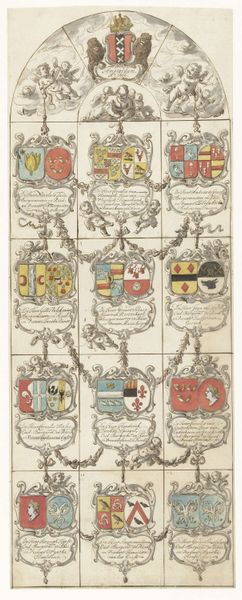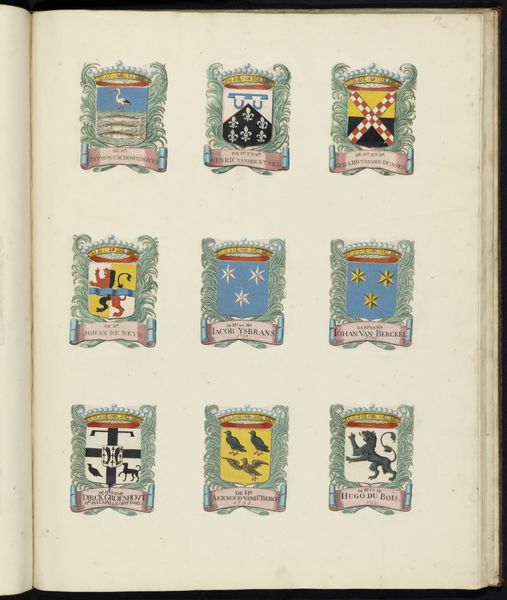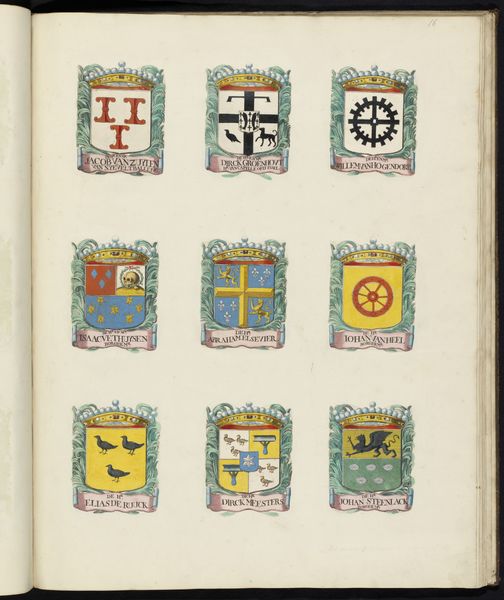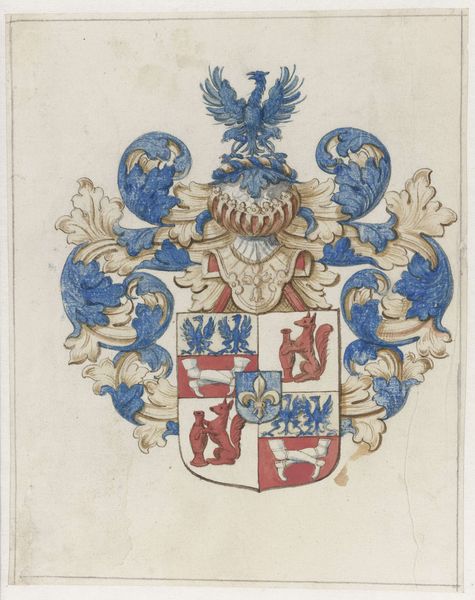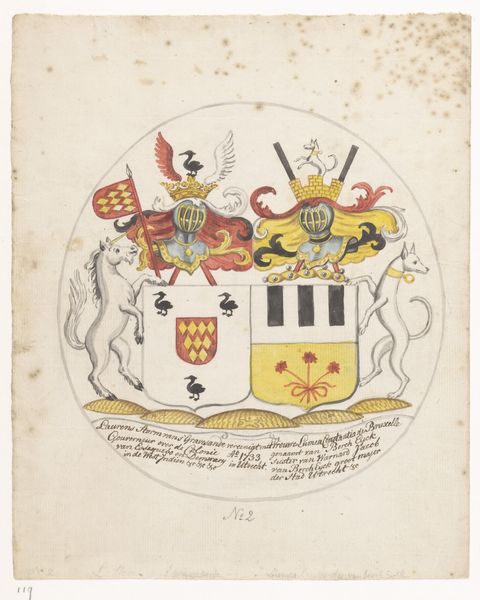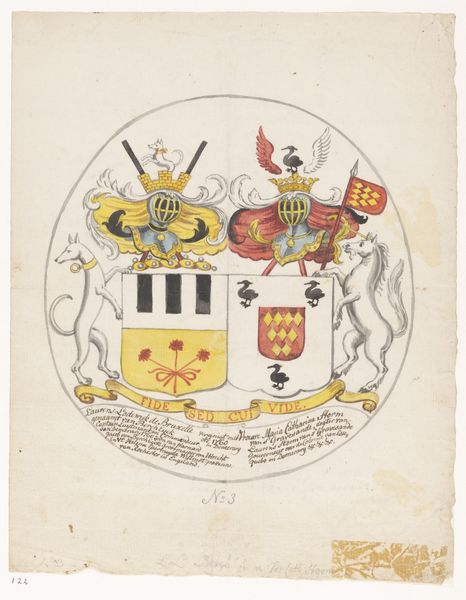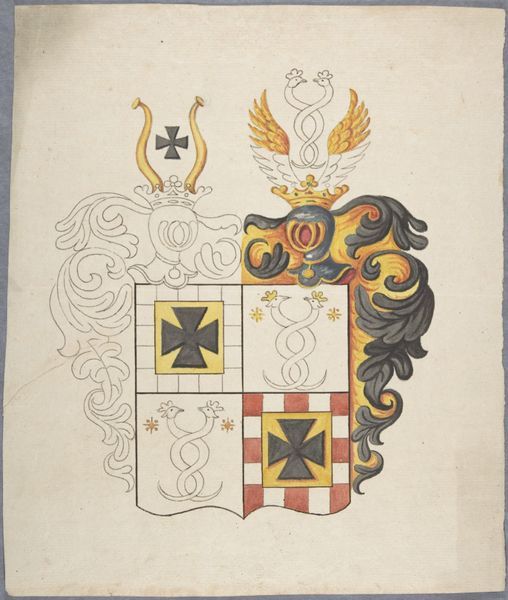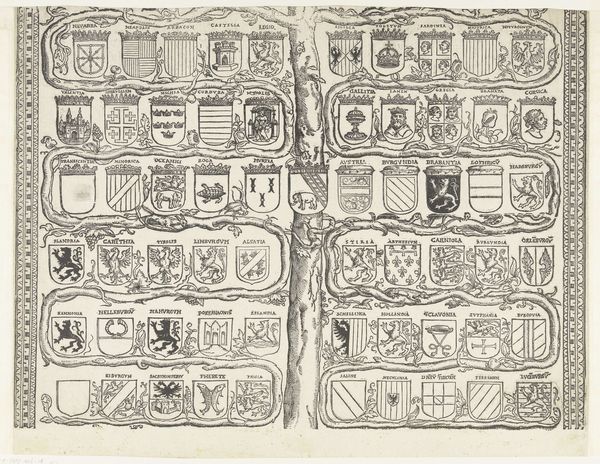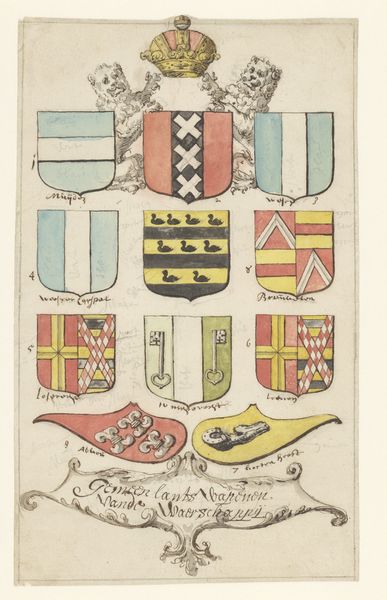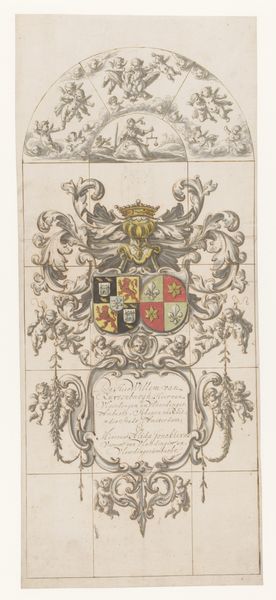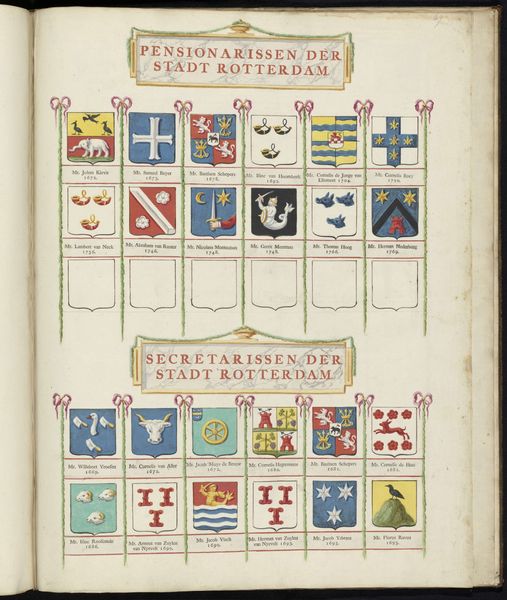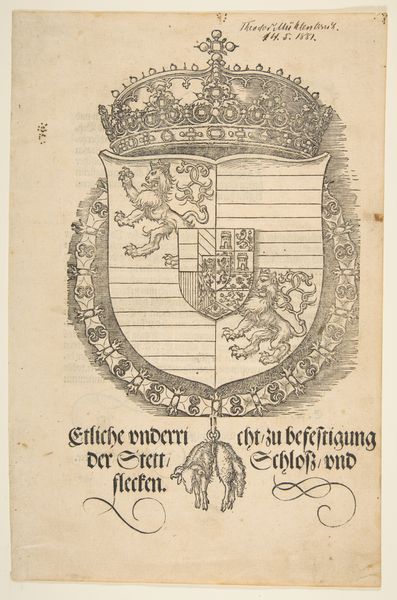
Coats of Arms of Bishops (recto and verso) from Das Concilium so zu Constantz, plate 26 from Woodcuts from Books of the XVI Century c. 1536 - 1937
0:00
0:00
drawing, graphic-art, print, paper, woodcut
#
drawing
#
graphic-art
#
medieval
# print
#
paper
#
woodcut
Dimensions: 229 × 131 mm (images/te×t, recto); 227 × 140 mm (images/te×t, verso); 292 × 193 mm (sheet)
Copyright: Public Domain
Editor: This graphic artwork, "Coats of Arms of Bishops," by Jörg Breu the Elder, dates from around 1536 to 1937. It's a woodcut on paper, and depicts four distinct coats of arms. The crisp lines and clear divisions within each shield are striking, yet there’s a faded, almost delicate quality to the colors. What stands out to you most about this piece? Curator: Well, what interests me immediately is the labour inherent in the production of these multiple, identical images. Consider the crafting of the woodblock itself – the specific tools used, the time investment required to meticulously carve these intricate designs, and the physical skill necessary to yield consistent prints. These are not merely aesthetic symbols, but physical objects emerging from a complex web of material and social processes. Editor: That's a different perspective. I hadn't really thought about the labour. So, the act of printing itself becomes part of the meaning? Curator: Precisely! The distribution of these prints, and their consumption, played a critical role in shaping societal understandings of power. The material itself – the paper, the ink – became a conduit for conveying this system of representation. Did these printed images bolster the Bishops influence by visualizing their lineage? Editor: So you are talking about using materiality as a vehicle to promote ideas and exert social pressure, right? I see what you mean now, and I can appreciate the attention to that labor, like you mentioned before. Curator: Yes. When we consider the resources, the workshop environment, and the act of distributing these prints, we start to uncover deeper connections between artistic production and broader social structures. Editor: This conversation really opened my eyes. I'm more aware of the relationship between this art and the physical process used to create it. Curator: It’s about shifting our gaze, appreciating art as a manifestation of collective effort.
Comments
No comments
Be the first to comment and join the conversation on the ultimate creative platform.
